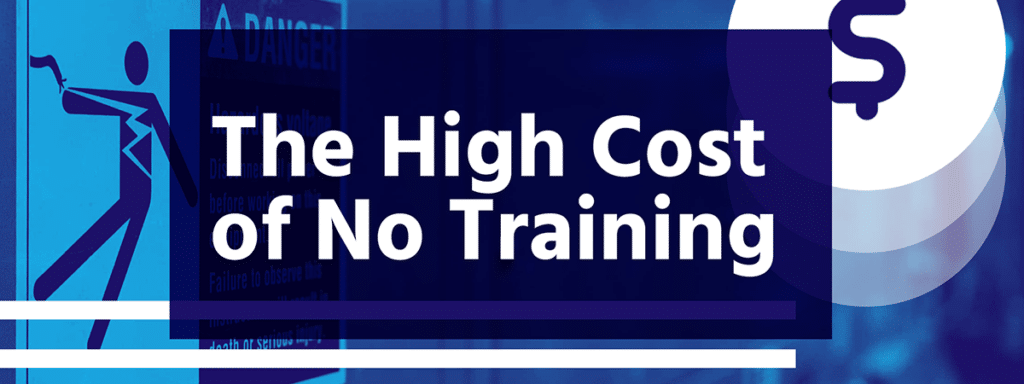Training is important to workers and organizations alike. In fact, in a Workforce Learning Report from LinkedIn, 94% of employees said they would stay at a company longer if the company invested in employee learning.
Think about it: whether you’re a healthcare worker on the front lines, an operator handling heavy equipment, or providing back office support, everyone needs to learn new skills through training. Instead of viewing it as an expense, training should be seen as an investment in your team’s success. So, what happens when companies don’t offer training? The consequences can be significant.

The Consequences
Safety. Every organization and industry has to consider safety. Even something as basic as fire or weather escape plans need to be communicated. Consider procedures for using medical or surgical devices and tools, which impact patient care. Safety on a job site—like knowing how to operate a machine the size of a building without running over someone. Administering the right amount of chemicals to fields. All of these examples and more take training and mindful safety steps. Untrained or under-trained employees are always more at risk for injury and causing injury to others, because they lack the proper skills to use equipment safely. Without proper knowledge critical mistakes—even fatalities—can happen, putting everyone at risk.
Turnover. When employees are unhappy it leads to high turnover. Now the organization not only has to invest in new hires but could also be losing the knowledge of long-term workers.
Production. If an employee does not understand how to perform the job, it leads to low productivity. Unskilled or under-skilled workers look for help and interrupt processes. When more experienced workers are correcting these employees’ mistakes it leads to low productivity.
Morale. Disengaged workers often have low morale. They also can cause low productivity. Often the root is not a bad attitude, but frustration in not understanding the job assignment or tasks.
Customers. Loss of customers is a big deal in today’s competitive marketplace. How many times have you needed good customer service and you didn’t get it? If only you had been able to talk to a knowledgeable and skilled customer service representative, that company might still have your business. Or consider having to replace defective products or cover warranty costs for customers. It can cost up to five times more to acquire a new customer than retaining the current customer. A well-trained customer service representative can save you from losing customers, promote your business through good service, and build your brand reputation.
Competitive advantage. A company has a competitive advantage because of their workforce. Whether that is producing a product or fulfilling a service, the knowledge and skills of the internal workforce can set a company apart from its competition.
The Solution
Any one of these consequences can cost an organization’s bottom line. How to change the outlook? Invest in employee training. The type of training, and how the training is delivered, can make a difference, too. All training is not created equally. But it could be. One great option is simulations, which can take the burden off your employees who are already stretched thin. And, when developed with subject-matter experts, simulations are just as effective as in-person training.
Imagine being able to train your employees anytime, anywhere, and in a way that guarantees consistent results. With Simulation Training, this is now a reality. No matter what type of process or equipment you need training for, it can be simulated to ensure effective learning. And the best part? You don’t have to do it alone. Our experienced team is here to guide you every step of the way.
Interested in finding out more about Simulation Training?
Ready to get started? Schedule a discovery call with one of our Simulation Experts today.
[social_buttons facebook=”true” twitter=”true” linkedin=”true” style=”default”]

